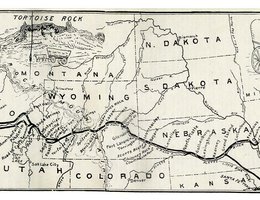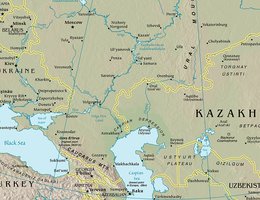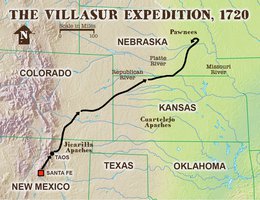
Image

Oregon Trail. Line of Original Emigration to the Pacific Northwest Commonly Known as the Old Oregon Trail" from The Ox Team or the Old Oregon Trail 1852-1906 by Ezra Meeker. Fourth Edition 1907. "Courtesy of the University of Texas Libraries, The University of Texas at Austin."
Image

Courtesy University of Texas Libraries
Image

Based on maps from NETCHE and The General Libraries, University of Texas at Austin, NET Learning Services
Web Page
Because of the Civil War, two things happened that created the American beef industry:
The Union had a huge army that needed food. To meet this demand, innovative butchers in Chicago with names like Gustavus Swift and P. D. Armour acquired large buildings, hired every butcher they could find, and bought every head of livestock ... Read more
Web Page
Because there were so many cattle in Texas and so few people, the cattle were worthless. But those same cattle were worth a lot in the north, where Americans’ taste for beef had grown. The four-dollar steer in Texas was worth 30 to 40 dollars in the north. The problem was getting the worthless cattle to the place where they had value.
The creation of the Union Pacific and Southern Pacific Railroads solved that problem. Texans could drive their cattle north ... Read more
Web Page
The change in the Nebraska landscape was dramatic. In just a few short years, cattle replaced the American bison as the leading, cloven-hoofed, grass-eating mammal on the Great Plains. In 1850, millions of bison ranged the grasslands and were the main natural resource for the region’s American Indians.
In 1868, the steel rails of the transcontinental railroad created a barrier that bison did not like to cross. That divided the great herd into northern and southern herds.
When the great trail drives ... Read more
Web Page
Cattle are so much a part of Nebraska life today that it may seem strange to think of a time when there were none in our area.
We think "west" when we think about beef in America, but its story is really about going north. Cattle are not native to the American continents. The Spanish brought them to the Americas in the 16th Century.
In Mexico, strays from Spanish herds, especially ... Read more
Web Page
In response to this change in taste, ranchers began to "up breed" their herds. But cattle like Hereford and Angus needed more tending than Longhorns did. They needed hay supplied to them in winter. They needed easy access to water. They often needed help calving, and especially ... Read more
Web Page
Several events caused an increase in the number of cattle in Nebraska after the Civil War. The destruction of the Plains bison made more room for cattle, and Native Americans needed a new meat source. Meat-processing plants in Chicago and gold miners rushing to the Black Hills needed beef. The enormous growth in the beef industry caused many changes and challenges.
In the 1870s, Americans’ taste for beef became more refined. ... Read more
Web Page
There were many reasons for the westward movement to Oregon and California. Economic problems upset farmers and businessmen. Free land in Oregon and the possibility of finding gold in California lured them westward. At the same time, eastern churches wanted to teach American Indians of the Oregon Country their European ideas of "civilization." Many simply hoped for a chance to start a new life. But it was not until 1841 that the first group with serious plans to emigrate to ... Read more
Web Page
In the early 1700s, Spain claimed as their exclusive territory most of the Central Plains including Nebraska. They were very concerned with protecting their rights to what they saw as a potentially enormous trade with the Native Americans on the plains. But it had been a Frenchman, Bourgmont, who had reached the Platte first and who named it. And the Spanish in New Mexico were seeing more and more evidence of French trade with tribes like the Apache, ... Read more
Web Page
In the late 1980s, the Cold War came to a dramatic end. The economies of nations behind the Iron Curtain were in trouble. People in East Germany, for instance, could see the prosperity and wealth of their West German neighbors. In Russia, there were long lines of people waiting to buy food. ... Read more